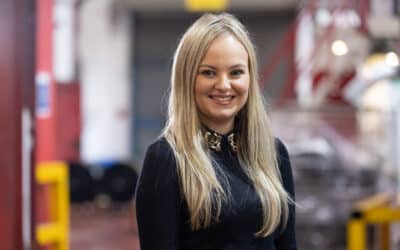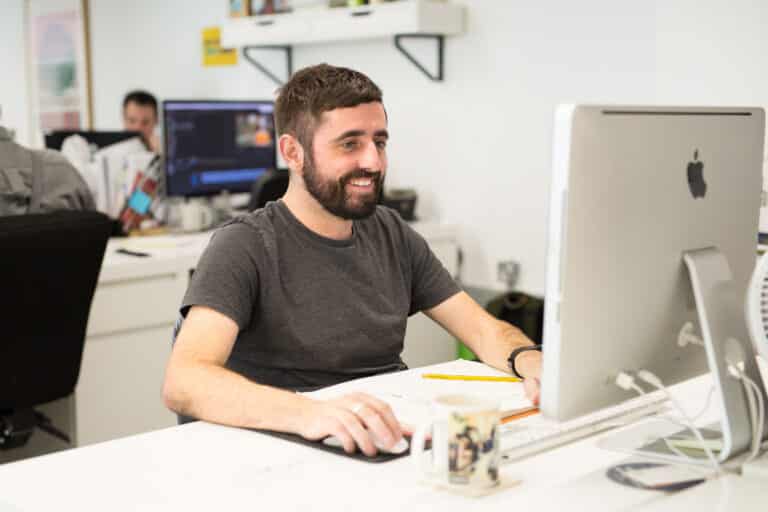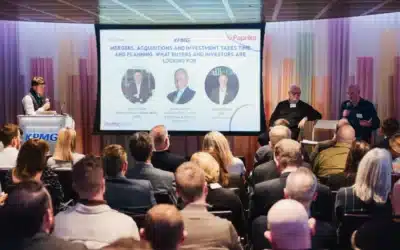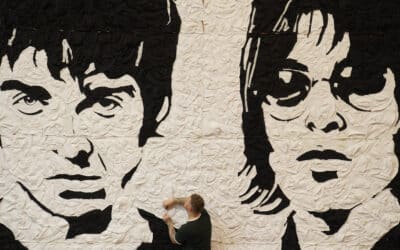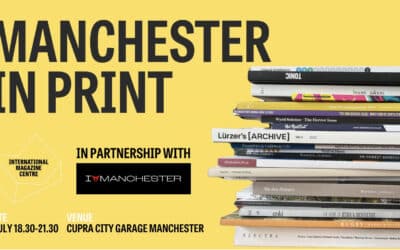Design director Stewart Williams has worked at Leeds-based ilk Agency for 15 years.
Named as one of Prolific North’s Top 50 Integrated Agencies for 2023, ilk was founded in 1999 by Nev Ridley.
Here, Williams shares his career journey, tips and advice for aspiring designers…
How did you first get into your industry?
I was really lucky to get my first job in the industry at Mitre Sports as a graphic designer, after studying creative imaging at the University of Huddersfield.
It was a dream job for me as it combined my two main passions – football and design. A big part of my role was to produce the graphics for their vast football range. I wish I had a penny for every time somebody said to me “Well that can’t be that hard, they’re all round aren’t they?” I also got my hands on all sorts of collateral, ad campaigns and even launched football kits for Ipswich Town and Huddersfield Town.
I loved my time there, but the office was based in a factory so the working hours were really strict – it felt too much like a 9-5. I really craved a studio environment that would allow me to be as creative as possible, and the flexibility to work on a project until I was happy with it. I was also the lone designer on the team, so there was no-one to learn from or bounce ideas off. So agency life beckoned.
What do you love about your job?
I’ve been at ilk for 15 years now, and it sounds like a cliche but for the majority of that time it’s not felt like a job! I’ve loved seeing how the agency has developed and grown, and to have been able to develop with it has been a real honour and a privilege.
Who – or what – has inspired you in your career?
It’s a common one, but growing up I only ever wanted to be a footballer, so as a youngster I never really thought about doing anything else. I’m really close to my uncle though – he’s in advertising and has worked in London at some really big agencies including Saatchi & Saatchi. I really looked up to him, and he took me along to a few agencies for work experience. After that I never really looked back.
I loved the way of life, the challenges of the brief and being in that creative environment. I owe him so much for the opportunities that he was able to get for me and the experience that I gained.
What are the biggest challenges about your job?
It’s all about staying fresh, pushing my creativity and making sure I keep relevant as a designer. As I’ve gotten older the landscape has changed so much. When I started the focus was print, but now designers are expected to know so many other things as standard – animation, 3D, UX and UI – so I need to adapt and learn as well.
What skills have been the most crucial to you succeeding in your career so far?
I’ve never really seen myself as a great designer, but my parents taught me the values of hard work and continually striving to push myself. It’s set me in good stead for such a fast paced and sometimes challenging environment.
From a creative perspective, it’s about taking on feedback and then adapting work accordingly. Design is so subjective, but listening to others has played a huge part for me. As a studio we like to be actively involved in each other’s projects, and take inspiration from other team members.
What was your first salary and what could someone getting into the industry expect to earn nowadays?
I started on £16k at Mitre. For somebody starting out in the industry now I think you’d be looking for something £21-24k.
What education or training would be most useful for someone looking to follow your career path?
I always suggest as much work experience and agency experience as you can get. Though I loved my time at university, and we worked on some fun projects, it didn’t represent the industry I know now. It wasn’t until I was actually working at Mitre that I discovered what I’d now consider basics, such as colour profiles, artworking and document profiles.
What advice would you have for someone looking to follow your path?
Never stop asking questions. Never stop learning from those around you. Absorb as much information as you can. And most importantly, enjoy it! You can’t just decide to be a designer with a flick of a switch. It takes passion and enthusiasm, which can’t be taught.


